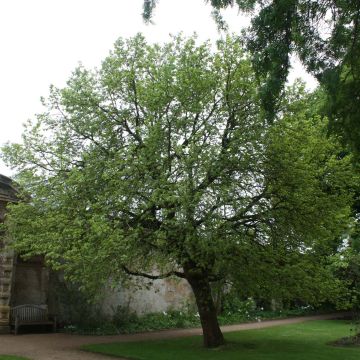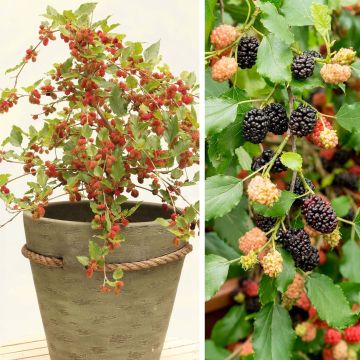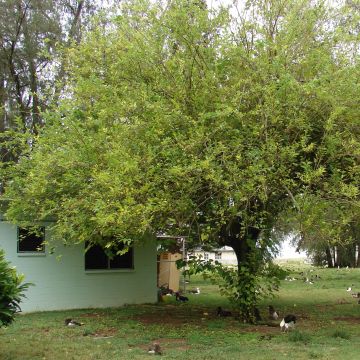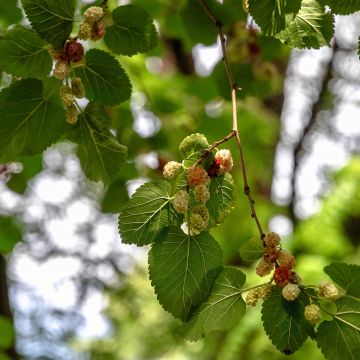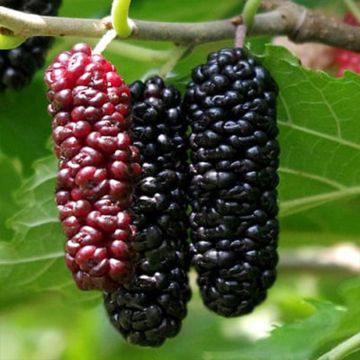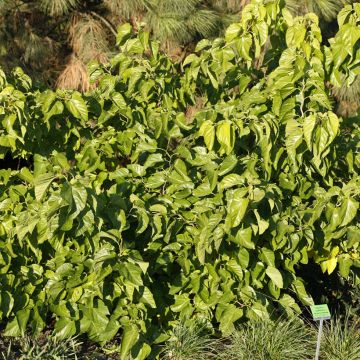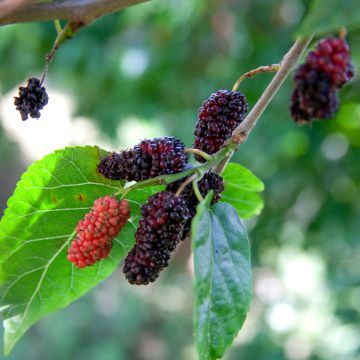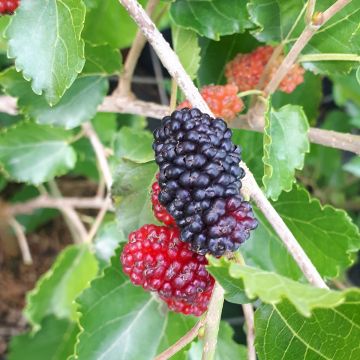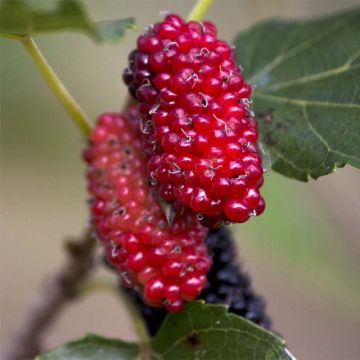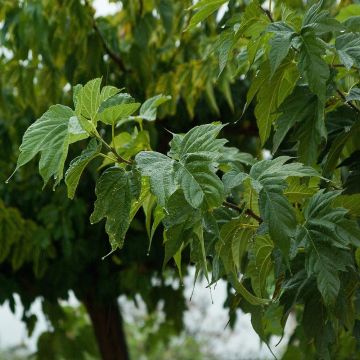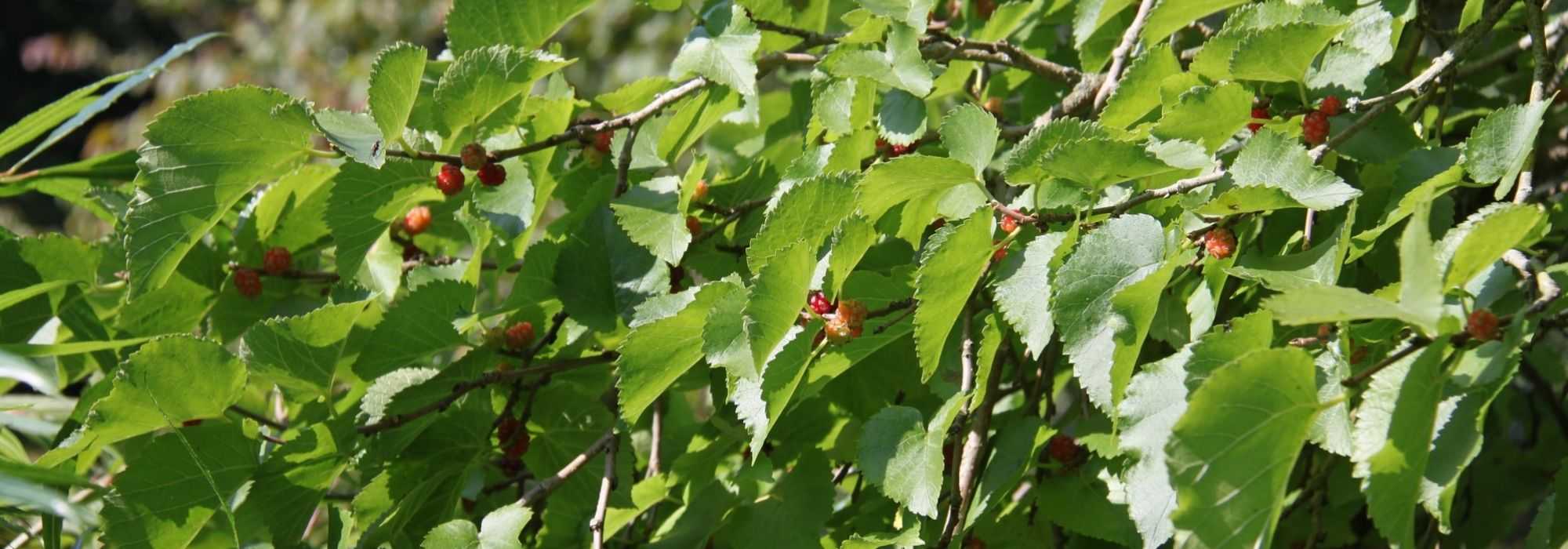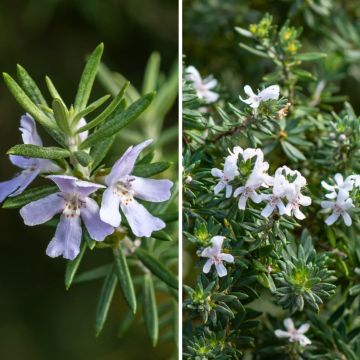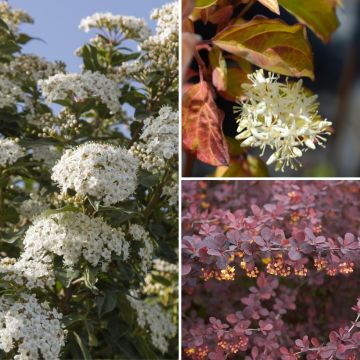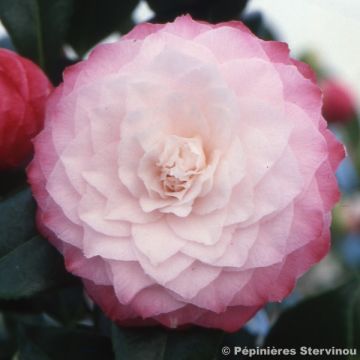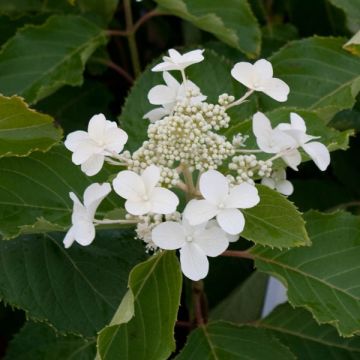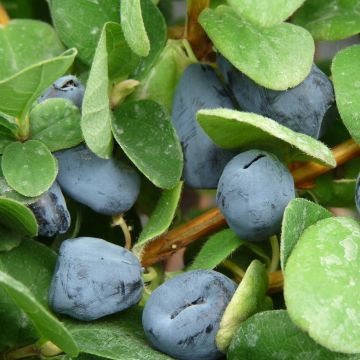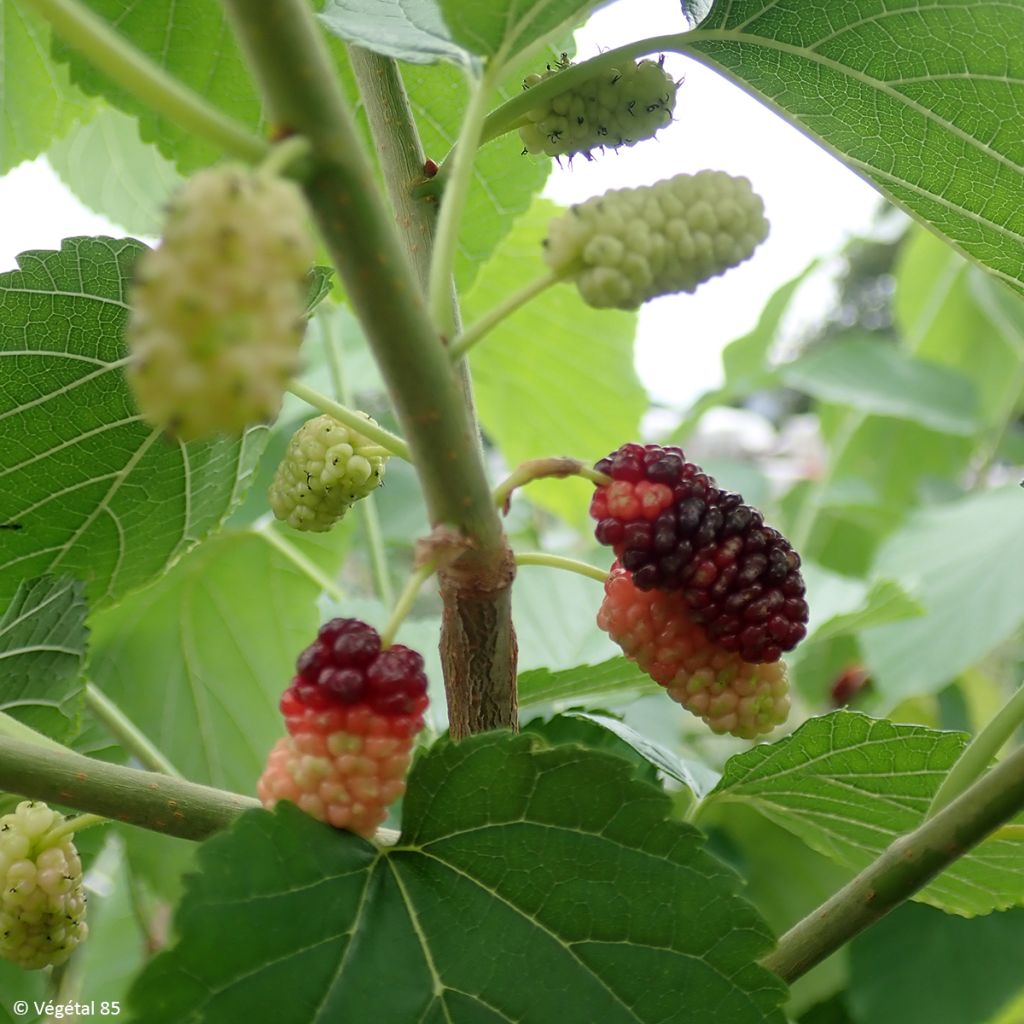

Morus Wellington - Mulberry
Morus Wellington - Mulberry
Morus (x) Wellington
Mulberry
Special offer!
Receive a €20 voucher for any order over €90 (excluding delivery costs, credit notes, and plastic-free options)!
1- Add your favorite plants to your cart.
2- Once you have reached €90, confirm your order (you can even choose the delivery date!).
3- As soon as your order is shipped, you will receive an email containing your voucher code, valid for 3 months (90 days).
Your voucher is unique and can only be used once, for any order with a minimum value of €20, excluding delivery costs.
Can be combined with other current offers, non-divisible and non-refundable.
Why not try an alternative variety in stock?
View all →This plant carries a 6 months recovery warranty
More information
We guarantee the quality of our plants for a full growing cycle, and will replace at our expense any plant that fails to recover under normal climatic and planting conditions.
Description
The 'Wellington' hybrid Morus is a beautiful tree with a dense and graceful branching, bearing large, superb glossy green leaves. In summer, it generously offers excellent fruits, ranging from purple to black, which are juicy, sweet, and subtly acidic. The tree is also attractive, as it ages, its trunk acquires a veined tone of russet and purple, with metallic highlights. It tolerates cold and drought well, allowing it to adapt to medium to large gardens. It prefers well-drained, fairly deep soils, benefiting from full sun exposure.
The 'Wellington' hybrid Morus, sometimes called Morus nigra 'Wellington' in Latin, is a member of the Moraceae family. This family, mostly found in tropical or subtropical regions worldwide, includes various genera such as Ficus, as well as decorative trees and shrubs such as Broussonetia papyrifera (Paper Mulberry) or Maclura pomifera (Osage Orange). The Wellington Mulberry is the result of cross-breeding between Morus rubra and Morus alba, recognized as one of the best mulberry varieties developed at the fruit testing centre in Geneva, New York. It was originally spotted on Richard Wellington's property in New York State. It develops an initially upright silhouette, then spreads as it ages to reach a height of 10 metres and a width of 6 to 7 metres, with a wide and dense crown at maturity. Its longevity and attractive silhouette give this tree a picturesque character as it ages.
The leaves of this tree are deciduous and alternate, measuring up to 20 cm long. They are dark green with a rough texture on the top, while the underside is fuzzy and lighter. Their heart-shaped form is adorned with a serrated or crenate outline. They turn yellow in autumn before falling for winter. During the period from May to June, this small tree is covered with tiny white catkin-shaped flowers, loved by insects. These flowers gradually form on the year's new shoots. The relatively late flowering of a mulberry effectively avoids the risk of late frosts in April.
The Wellington Mulberry is a highly productive and self-fertile tree, not requiring the presence of another variety to bear fruit. The ripening of the fruits extends over several weeks, from July to September, allowing staggered harvests. The cylindrical and round fruits, measure up to 2.5 to 3 cm long, reaching maturity when they change from red to blackish purple. They contain juicy, sweet, and slightly acidic pulp. The fruits, borne on short peduncles, bear a strong resemblance to blackberries (Rubus fruticosus). Caution, these black berries can have a laxative effect and their pigments can cause stubborn stains. Rich in antioxidants, vitamins B and C and minerals (iron, calcium, and magnesium), they provide about 50 kcal/100g. Birds also love this food.
In the kitchen: The fruits should be harvested once they have reached a black colour and full ripeness, otherwise, they are too acidic. Picking very carefully. Consumption should be quick, as they deteriorate rapidly, although freezing is a suitable option. Mulberries are versatile, delicious raw or cooked, ideal for making jellies, jams, syrups, sorbets, pies, and chutneys. For an original appetizer, explore a cocktail combining the flavour of black mulberry with the freshness of basil.
The 'Wellington' Mulberry is a superb tree offering generous shade with deciduous, dense, and luxuriant foliage. It is robust and capable of withstanding heat and drought. It tolerates light, sandy, and limestone soils, deep and well-drained, neither too wet nor too dry, and thrives in sunny exposure. However, it is best to avoid planting the tree above a path, as its fruits tend to cause stubborn stains. With a trunk covered in dark and deeply fissured bark, this mulberry exudes a rustic yet refined appearance, distinguishing it as a tree with a distinctive personality.
Plant habit
Fruit
Flowering
Foliage
Botanical data
Morus
(x)
Wellington
Moraceae
Mulberry
Morus nigra Wellington
Cultivar or hybrid
Other Morus - Mulberry
View all →Planting and care
Morus Wellington, although self-fertile, may take some time to start producing fruits, about 7 to 8 years. It should be planted in spring or autumn, outside of periods of heavy frost, in well-drained, fertile and deep, ordinary soil, in full sun. It tolerates the presence of limestone in the soil very well. Be careful not to damage its fleshy and brittle roots during planting. Although the plant is resistant to summer drought periods, it is recommended to water it regularly during its first years to promote optimal rooting.
Avoid severe pruning on this mulberry tree, especially the thick branches and old branches. It can be susceptible to rust, canker, or powdery mildew, in which case treat with copper.
Avoid placing your Wellington Mulberry near a terrace, as its black fruits can cause stains.
Planting period
Intended location
Care
Planting & care advice
This item has not been reviewed yet - be the first to leave a review about it.
Similar products
Haven't found what you were looking for?
Hardiness is the lowest winter temperature a plant can endure without suffering serious damage or even dying. However, hardiness is affected by location (a sheltered area, such as a patio), protection (winter cover) and soil type (hardiness is improved by well-drained soil).

Photo Sharing Terms & Conditions
In order to encourage gardeners to interact and share their experiences, Promesse de fleurs offers various media enabling content to be uploaded onto its Site - in particular via the ‘Photo sharing’ module.
The User agrees to refrain from:
- Posting any content that is illegal, prejudicial, insulting, racist, inciteful to hatred, revisionist, contrary to public decency, that infringes on privacy or on the privacy rights of third parties, in particular the publicity rights of persons and goods, intellectual property rights, or the right to privacy.
- Submitting content on behalf of a third party;
- Impersonate the identity of a third party and/or publish any personal information about a third party;
In general, the User undertakes to refrain from any unethical behaviour.
All Content (in particular text, comments, files, images, photos, videos, creative works, etc.), which may be subject to property or intellectual property rights, image or other private rights, shall remain the property of the User, subject to the limited rights granted by the terms of the licence granted by Promesse de fleurs as stated below. Users are at liberty to publish or not to publish such Content on the Site, notably via the ‘Photo Sharing’ facility, and accept that this Content shall be made public and freely accessible, notably on the Internet.
Users further acknowledge, undertake to have ,and guarantee that they hold all necessary rights and permissions to publish such material on the Site, in particular with regard to the legislation in force pertaining to any privacy, property, intellectual property, image, or contractual rights, or rights of any other nature. By publishing such Content on the Site, Users acknowledge accepting full liability as publishers of the Content within the meaning of the law, and grant Promesse de fleurs, free of charge, an inclusive, worldwide licence for the said Content for the entire duration of its publication, including all reproduction, representation, up/downloading, displaying, performing, transmission, and storage rights.
Users also grant permission for their name to be linked to the Content and accept that this link may not always be made available.
By engaging in posting material, Users consent to their Content becoming automatically accessible on the Internet, in particular on other sites and/or blogs and/or web pages of the Promesse de fleurs site, including in particular social pages and the Promesse de fleurs catalogue.
Users may secure the removal of entrusted content free of charge by issuing a simple request via our contact form.
The flowering period indicated on our website applies to countries and regions located in USDA zone 8 (France, the United Kingdom, Ireland, the Netherlands, etc.)
It will vary according to where you live:
- In zones 9 to 10 (Italy, Spain, Greece, etc.), flowering will occur about 2 to 4 weeks earlier.
- In zones 6 to 7 (Germany, Poland, Slovenia, and lower mountainous regions), flowering will be delayed by 2 to 3 weeks.
- In zone 5 (Central Europe, Scandinavia), blooming will be delayed by 3 to 5 weeks.
In temperate climates, pruning of spring-flowering shrubs (forsythia, spireas, etc.) should be done just after flowering.
Pruning of summer-flowering shrubs (Indian Lilac, Perovskia, etc.) can be done in winter or spring.
In cold regions as well as with frost-sensitive plants, avoid pruning too early when severe frosts may still occur.
The planting period indicated on our website applies to countries and regions located in USDA zone 8 (France, United Kingdom, Ireland, Netherlands).
It will vary according to where you live:
- In Mediterranean zones (Marseille, Madrid, Milan, etc.), autumn and winter are the best planting periods.
- In continental zones (Strasbourg, Munich, Vienna, etc.), delay planting by 2 to 3 weeks in spring and bring it forward by 2 to 4 weeks in autumn.
- In mountainous regions (the Alps, Pyrenees, Carpathians, etc.), it is best to plant in late spring (May-June) or late summer (August-September).
The harvesting period indicated on our website applies to countries and regions in USDA zone 8 (France, England, Ireland, the Netherlands).
In colder areas (Scandinavia, Poland, Austria...) fruit and vegetable harvests are likely to be delayed by 3-4 weeks.
In warmer areas (Italy, Spain, Greece, etc.), harvesting will probably take place earlier, depending on weather conditions.
The sowing periods indicated on our website apply to countries and regions within USDA Zone 8 (France, UK, Ireland, Netherlands).
In colder areas (Scandinavia, Poland, Austria...), delay any outdoor sowing by 3-4 weeks, or sow under glass.
In warmer climes (Italy, Spain, Greece, etc.), bring outdoor sowing forward by a few weeks.






























